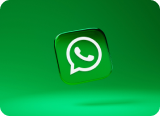Push the Boundaries of Customer Engagement With Push Notifications
In today’s uber-competitive, high stakes marketplace, businesses that do not focus on enhancing customer engagement risk losing out market share to competitors. Most customer-first businesses know this, and try to be present on multiple channels – ranging from WhatsApp, live chat, and Messenger in addition to the traditional SMS, email, and voice – for better outreach. Another channel that has gained traction as a highly effective customer communication tool is the mobile push notification. With smartphone usage at an all-time high, mobile push is increasingly being leveraged by customer-savvy retailers, FMCG players, F&B businesses, BFSI companies, and the travel industry, among others, to announce new products, offer last-minute exclusive deals, share shipment alerts, woo back dormant customers with personalized recommendations, and so on. Used prudently, push messages have been proven to boost app engagement and retention considerably. They have a higher opt-in rate, open rate and click-through rate compared to many other channels. Companies that are still not using mobile push messages are unwittingly missing out on an excellent opportunity to deliver value to customers, increase brand loyalty, and drive sales.
If you are wondering when to use push for your business, how to make it compelling, and points to consider when you choose your push notification partner, read on!
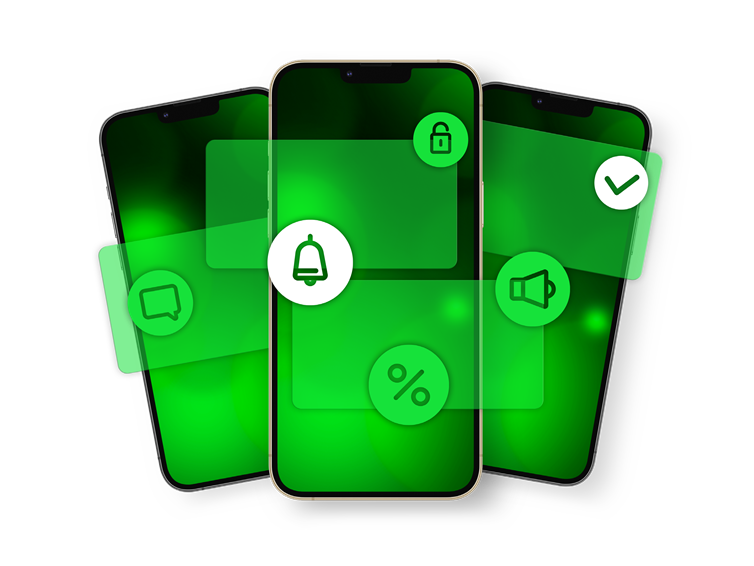
Key Advantages of Push as a Channel
Push notifications score high among brands due to their many advantages.
1. They Revive Your App Usage
Many customers download apps, use them a couple of times, and then forget entirely about them. These apps lie dormant in a forgotten corner of the customer’s smartphone – not a good news for businesses that invested in them. Push notifications are a powerful tool to revive such dormant customers and bring them right back to your app. When you send a push notification with a personalized message offering customers an exclusive deal and the customer clicks on them, they are led right back into the app and start engaging with your business again.
2. They are Hard to Miss
It’s easy for customers to miss an email, but push notifications are almost guaranteed to catch your customer’s attention. Because they are crisp and to-the-point, the full message pops up on your customer’s lock screen so you can rest assured your message will be read or at least glanced at, and hopefully be engaged with.
3. You Can Leverage Rich Media
Unlike SMS which is limited to text only, push messages can get really creative with images, buttons, emojis, pictures, etc. They are more visually appealing and add a fun element, and it’s more likely audiences will engage with them. To give you an example, when you remind your customers that their favorite burger is back on the menu, adding an image of the sumptuous burger will leave your customers drooling and wanting to order it fast, rather than sending a non-descript text message and hoping to stand out!
4. They Are Great at Increasing Conversion
Because you need explicit permission from users before you can send them a push, you can rest assured these customers are actually interested in receiving updates from your business. So as a channel push is quite reliable because you know your customers already want to hear from you.
5. They Reduce the Burden on Your Call Centers
By proactively sending updates to customers about their orders and sharing other valuable information, businesses reduce the need for customers to reach out to them over phones, reducing the burden on call center agents and also lowering the need to maintain vast customer support teams.
Innovative Ways to Use Push Notifications
Businesses can get really innovative in how they can use push notifications to engage customers. We can divide push notifications based on their purpose into the following types:
Transactional Notifications
- Purchase confirmation updates
- Payment received / failed notifications
- Bill payment alerts
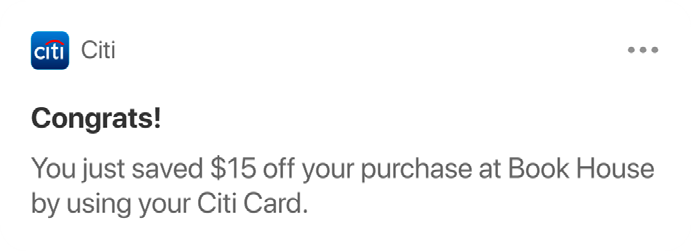
Reminder Notifications
- Alerts about upcoming events, bookings, etc.
- Reminders about incomplete actions such as abandoned carts, checkout not completed
- Reminders about card expiry dates, subscription expiry dates, etc.
- Reminder about offer period lapse dates

Retention Notifications
- Inactivity notifications
- Welcome messages for new users
- Apologies for delays
- Special discounts to prevent churn
- Loyalty point updates
- Back-in-stock alerts
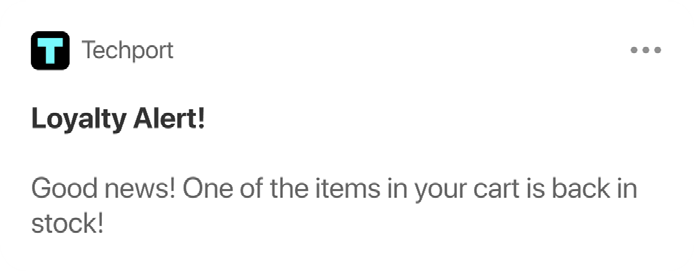
Promotional Notifications
- Limited-time sales offers
- Live event notifications
- Holiday sales notifications
- Tailored product recommendations
- New product launch invites

Location-Based Notifications
- Alerts sent to re-engage with users when they are near your restaurant or store
- Special travel-based offers
- Messages requesting reviews of travel experience

Behavior-based Notifications
- User’s browsing history-based alerts
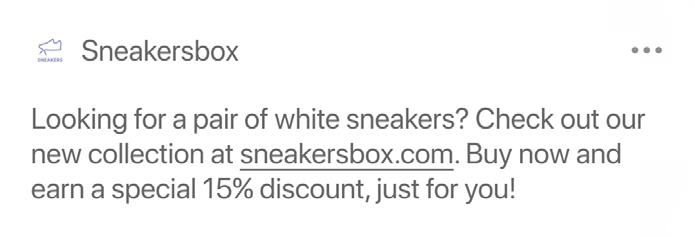
Recurring Push Notifications
- Birthday, anniversary greetings
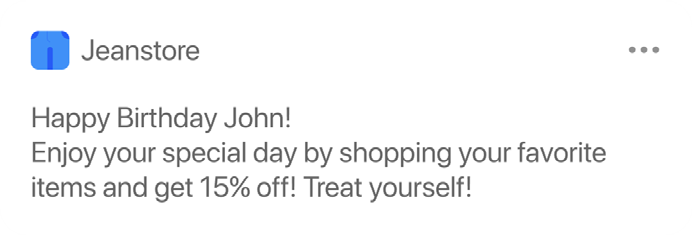
9 Best Practices to Make Push Notifications Successful
While more and more businesses are leveraging push notifications to reach their customers, not all are able to realize desired results. The barrage of notifications pouring in from different apps on a daily basis has become more of a nuisance for customers, who only engage with messages they see value in. Spammy, intrusive, depersonalized, or too frequent messages are being completely ignored. Companies need to understand that being able to send a push message is a privilege the customer has accorded them by opting in, so it must not be used frivolously.
We’ve compiled a list of 9 best practices that we hope will help you improve the open rates and conversion rates of your push notifications.
1. Let Your Customers Decide Which Notifications They Want to See
When you request your customers’ permission to send them notifications, don’t just send a lame “Would you like to receive our notifications” message. Include a screen message to tell them exactly what they are getting by opting in – is it news about new products, exclusive discounts, price drop updates? Better still, ask them what kind of notifications they are interested in, whether it’s service-related updates, information on new products, exclusive deals, loyalty program points, or something else. By allowing them to pick and choose what they want to see, you can put your customers in control and expect them to be more likely to respond to your notifications.
Also make it easy for them to opt out if they wish to. You can always re-target them later via email or SMS explaining the perks of opting back in (e.g., getting instant price drop notifications).
2. Don’t Bombard Your Customers With Too Many Notifications
When it comes to push notifications, more does not always mean merrier. Digital fatigue is real. Think about this, an average US mobile user receives up to 46 push notifications per week! If you keep sending too many push messages, you will end up frustrating your customers, who might disable your messages, or worse, remove your app from their smartphones.
Push, while a powerful tool, should be used with caution and businesses should be mindful of how often they are reaching out. It is important to consider the frequency and number of sending push messages. You can set trigger limits that once reached, will prevent you from sending more messages during a particular time period. Also be mindful of the user’s time zone.
It’s a good idea to ask users to choose the frequency at which they would like to receive such messages. Would they like to receive daily, weekly, or monthly updates? Your customers will be more receptive to messages they have already agreed to receive.
3. Personalize, Personalize, Personalize
Most push messages go unopened because users do not find any relevance or value in them. They feel more like impersonalized, broadcast messages that do not in any way make the user feel special. Adding small details like the user’s name or an item they were looking for but could not find can add a personal touch and signal to the user that the company values them and cares for them. Whether it is a simple reminder notification or even a promotional message, adding a personal touch makes a huge difference in how the user responds to your message.
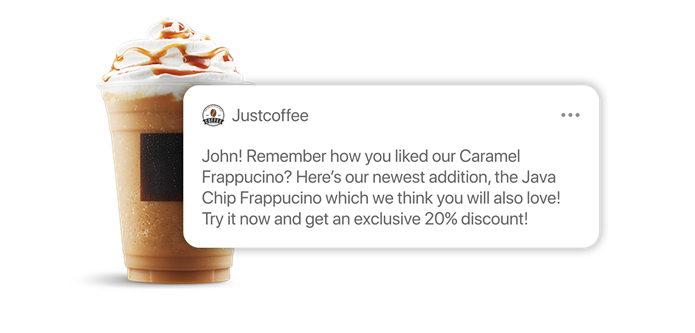
4. Segment Your Audience Based on Their Behavior
Personalization is important, but it is equally important to segment your users based on their behavior, and not just on their stated interests. A user may select a particular category as their interest but may never actually check out related pages. Then there is no point sending them content related to that page. Instead, it’s better to customize the content for that user based on their behavior and real interests and then send them customized messages.
Savvy businesses track their user’s in-app behavior and use this knowledge to strategically share content which they feel their user may actually engage with. They segment their users into different user groups based on the user’s behavior and send them messages accordingly. They assign tags to different pages or categories and when users visit these pages or click on a product, the tag is stored in the push system for that user. They use this to send out future notifications based on their user’s behavior. A great example is Netflix. It invariably sends out push messages to users informing them of upcoming seasons of a show they have already watched.
5. Write Engaging Copy That is Benefit-Driven and Actionable
The big advantage of push notifications is that almost the entire message pops up on the reader’s lock screen so it’s difficult to ignore. However, for a message to really stand out among the many others pouring in, the copy must be to-the-point and clearly state the message’s purpose in as few words as possible. Your push messages may be innovative and creative, but they mean nothing if you do not state a clear benefit or a clear action the user must take. Your messaging must encourage the user to take some action, say for example, “Track Order”, “Redeem Your Coupon”, “Buy Now”, “Download Your Account Statement”, etc. Your CTA can mention the exact discounts available, remind users of an ongoing sale, ask them to redeem their loyalty points, etc. These are all action-driven and are more likely to increase engagement or at least start conversations.

6. Use Deep Links to Guide Users to the Right Place in Your App
So you have personalized your message and sent it to a targeted user segment, but are still wondering why user engagement levels are low? It could be because you are not using deep links to guide your users to the right place in the app. When users click on your push notification’s link, they should be led directly to specific pages in the app, and not land up on some other page where they need to begin their search again. Customer efforts should be minimized, and customer-first companies always use deep links to ensure good ROI for their push efforts.
7. Use Emojis and Other Rich Features
It’s a great idea to use emojis in your push message. Companies that liberally use emojis in their messages see significantly higher open rates and click rates compared to those that don’t. As per an analysis by Forbes, emojis can boost push notification opens by 85 percent and can increase conversions by 9 percent. The simple reason for this is that emojis have a way of conveying a mood in a way that words can’t. Your users most definitely use emojis in their personal conversations and they can emotionally connect with messages that have emojis. So do remember to incorporate them in your messages.
8. A/B Test Content to See If It Resonates With Users
It’s important to A/B test your messages to see what’s working and what’s not. You can test individual variables like the message content (by monitoring open or click-through rates), frequency (daily vs weekly), etc. to see the level of engagement your messages are creating and revise your strategy accordingly.
9. Sync Your Push With Other Channels
To achieve the best results, you need to integrate your push notifications with other channels and the CRM platform so that all your customer communication is synchronous.
Why Choose edna to Deliver Your Push Notifications
There are many free push solutions available in the market, but they come with a number of caveats. One, if you use free pushes you will need to independently store and update the database of your customers’ push addresses. Push addresses periodically change and become outdated – so you will need to keep tracking these changes. At edna, we have the technology to keep the database up-to- date. This helps to ensure that all push messages are delivered to consumers. Two, many solutions that are touted to be free do not really come free of cost – clients like you will need to incur the costs of development, support and monitoring, and these are hardly tasks you would want to bother yourself with. Three, many freely available push solutions do not have a stable mechanism for transferring delivery status, so you have no way of knowing to whom and how many push notifications were delivered. At edna, we have our own mechanism to track the delivery status of the message and we also offer comprehensive reports on the efficiency of your push campaign.
We at edna can help you deliver perfect push messages that will boost your customer engagement significantly. What makes us unique is our easy-to-install, cost-effective, secure solution and rich messaging capabilities that ensure greater delivery compared to other solutions. Our push solution is:
1. Easy to Install and Cost Effective
Our solution is easy to set up. We provide interactive instructions that help our clients integrate push notifications into a customer’s mobile application. The client registers a push channel on our platform and specifies the details of the iOS, Android, and Huawei clouds in which he must first create accounts. Next, they need to take our SDK and integrate it into a mobile application and release this application to customers. The cost of implementing the SDK in a mobile application is approximately just 1-2 hours of a qualified mobile developer. Clients who have updated the application with our built-in SDK get a working channel.
We provide our clients with easy-to-deploy SDKs that help them get the system up and running quickly. Also, our system is easily scalable and based on usage. There is no need to buy any additional hardware when the demands of your business grow. You can deploy edna’s scalability features.
2. Near-Guaranteed Deliverability
Push can be blocked on low-budget Android models, because the operating system blocks background processes to save battery power. Background processes are needed to receive push. We have our own extensive fleet of Android devices and take into account the features of Meizu, Xiaomi, Huawei, and other skins. Also, upon request, we can organize the distribution of instructions to end users on including your application in the energy saving whitelist.
We guarantee more than 90 percent deliverability. We use GCM (Google Cloud Messaging), Apple Cloud, and HCM (Huawei Cloud Messaging) for push notification deliveries, which covers all major operating systems / device types used by customers. We are among the very few providers who use Huawei Cloud which is why we have the capability to deliver push to users using Huawei devices. Also, we use alternative fall-back channels like WhatsApp and SMS in case a push notification fails to deliver. This cascade feature ensures that the target audience always receives the message.
3. Enhanced Security
Our solution was first designed for the BFSI sector, so we’ve built the most secure PUSH to enable you to share your user account or purchase-related information through a hacker-proof channel. We understand that user security is key, so we use the standard PUSH channel only to deliver notifications that some content needs to be downloaded. Once the application receives the notification and informs the server, the actual content is sent through a private, secure SSL channel between the application and the server. All so that you never have to compromise on user security.
4. Rich Push Capabilities
Not all push notification providers have the capability to engage audiences via images, buttons, videos, audios, emojis and gifs, but we do. Our powerful add-on service has been proven to significantly enrich your content and increase direct open rates exponentially. You can send out text messages of any length, add images, videos, audios, emojis, gifs, and even important documents. What’s more, you can add your business logo, full name and address each time you interact with users, add icons of processed transactions, and all kinds of business details – such as opening hours, description, promotions, offers, etc. – creating an unmatched user experience.
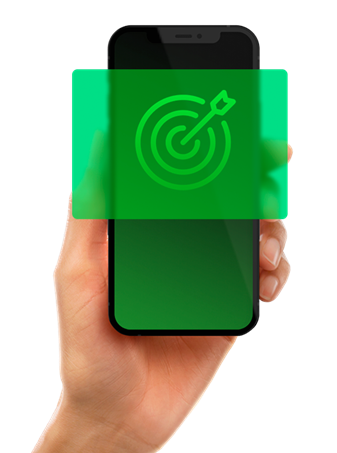
Push notifications provide a direct path for you to reach out to customers with information that is valuable for them. So you must have a well-thought-out strategy and the right partner to help you make the most of your channel.
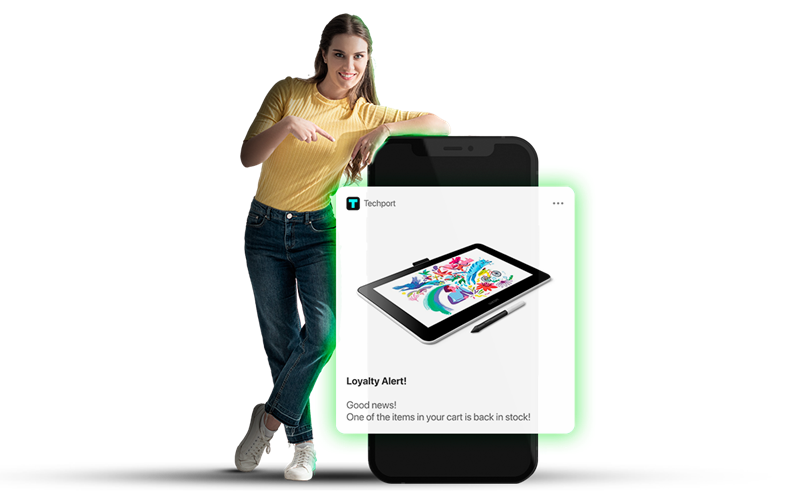
edna is a leading digital communication solutions provider that is revolutionizing the way organizations connect and converse with consumers. For more than 15 years, we have been helping companies to use advanced communication technologies to orchestrate streamlined, programmatic omnichannel communications over all major social messengers, live web and in-app mobile chat, PUSH messaging and SMS. edna is an official service provider for WhatsApp Business, Apple Business Chat, and Viber for Business. We work with 550+ enterprise clients that include leading organizations in Retail, FMCG, Banking, Insurance, Air Travel, Telecom, Hospitality and Healthcare and process 4 Billion+ messages every month. Learn more about our offerings at edna.io

